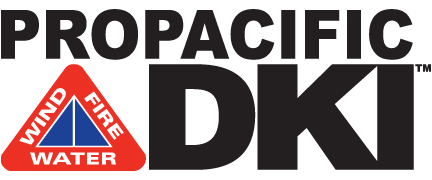Flood Damage Classifications
To ensure that water damage is treated properly, the restoration industry provides four flood damage classification grades, based on severity.
Mold, rotting wood, rusting metal, and de-lamination of plywood are just some of the consequences when water damage is left unchecked. When extreme, water intrusion can cause extensive structural damage.
Here are the four flood damage classifications followed by the restoration industry, in order of least to most severe.
Flood damage classifications
Class 1: Slow Evaporation Rate
Class 1 damage refers to water intrusion with a slow evaporation rate. Typically, only a part of a room or area is affected. Damage is seen in materials with lower permeance and porosity, such as plywood, particleboard, structural wood, vinyl commercial tile (VCT), and concrete. Little or no wet carpet or carpet padding is present. Materials, releasing moisture slowly, absorb minimum moisture.
Class 2: Fast Evaporation Rate
With Class 2 damage, water intrusion has affected an entire room or both carpeting and cushion. Water has “wick”-ed up walls from 12 to 24 inches. Moisture will remain in structural materials, such as structural wood, plywood, particleboard, and concrete.
Class 3: Fastest Evaporation Rate
With Class 3 damage, water may have come from overhead. Typically, ceilings, walls, insulation, carpet, cushion, and sub-floor in the entire area are saturated.
Class 4: Specialty Drying Situations
A Class 4 Specialty Drying Situation occurs when water penetrates materials with very low permeance or porosity, such as hardwood, plaster, brick, concrete, and stone. Typically there are deep pockets of saturation that require very low specific humidity.
Our Service Territory
DKI-Pro Pacific’s exclusive service territory is highlighted on the map above. Please click on the office location closest to your property for contact details.
“You rock!”
- Disaster Kleenup International (DKI)
- The Chamber: Greater Victoria Chamber of Commerce
- Institute of Inspection Cleaning and Restoration Certification (IICRC)
- Canadian Federation of Independent Business (CFIB)
- Restoration Industry Association (RIA)
- Canadian Homebuilder’s Association, Vancouver Island



